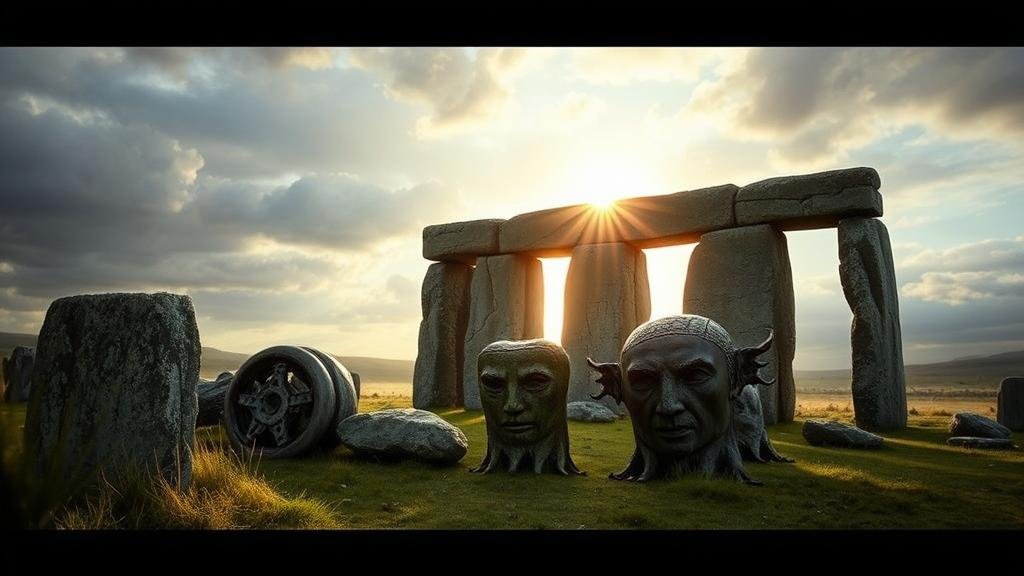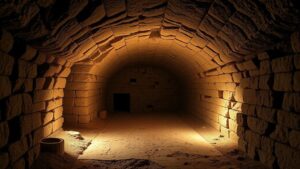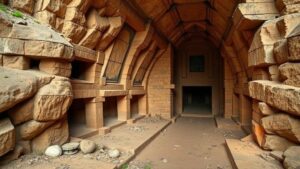Exploring the legends of the “Shining Ones” associated with megalithic structures.
Exploring the Legends of the Shining Ones Associated with Megalithic Structures
Throughout history, the mythology surrounding ancient civilizations has been rich with tales of mysterious beings and entities. Among these legends, the concept of the Shining Ones emerges prominently, often associated with megalithic structures. This article delves into the origins, characteristics, and cultural significance of the Shining Ones, exploring their impact on ancient societies and their connections to impressive stone edifices.
Origins of the Shining Ones
The term Shining Ones typically refers to a group of supernatural beings with ties to various ancient mythologies. legend is prevalent across numerous cultures, with variations found in Celtic, Sumerian, and Native American folklore. In many cases, these beings were described as luminous figures or gods possessing extraordinary abilities.
For example, in Celtic tradition, the Tuatha Dé Danann are often referred to as the Shining Ones. According to texts such as the Book of Invasions, they were supernatural beings who descended from the sky, later regarded as deities of the earth. Their lore is steeped in magic and wisdom, connecting them to various megalithic sites, including the Newgrange passage tomb in Ireland, built around 3200 BCE.
Characteristics of the Shining Ones
The Shining Ones are often characterized by their radiant appearance and ethereal qualities. are typically depicted as benevolent protectors or wise sages who possess advanced knowledge, especially in astronomy, agriculture, and stone construction. This is particularly evident in the construction of megalithic structures which required a sophisticated understanding of engineering and geometry.
For example, Stonehenge in Wiltshire, England, constructed around 3000 BCE, showcases precise astronomical alignments that correlate with solstices and equinoxes. Some archaeologists theorize that the builders, possibly influenced by the Shining Ones mythology, intended these structures to serve as astronomical observatories or ceremonial sites.
Cultural Significance and Real-World Applications
Legends of the Shining Ones have played a crucial role in the way ancient peoples understood the world around them. element of divinity attributed to these entities often inspired communities to undertake monumental construction projects, reflecting their reverence toward the celestial and the unknown.
- The construction of megalithic sites, such as Gobekli Tepe in Turkey (dating back to around 9600 BCE), suggests early humans possessed monumental vision, potentially guided by their connection to the divine.
- In Mesoamerica, the Olmec civilization worshipped deities depicted as coming from the sky, something echoed in their colossal stone heads, further highlighting the interconnectedness between mythology and architecture.
The Legacy of the Shining Ones in Modern Culture
Despite their ancient origins, the legend of the Shining Ones continues to resonate today, often appearing in literature, film, and art. Concepts of advanced beings guiding humanity persist, such as in the works of authors like H.P. Lovecraft, where extraterrestrial figures encapsulate our awe and curiosity regarding ancient knowledge.
Plus, the resurgence of interest in ancient astronomical practices and megalithic sites has led to a broader exploration of how ancient cultures viewed their universe. Modern archaeological work frequently employs new technologies, such as ground-penetrating radar, to uncover hidden structures and enhance our understanding of these enigmatic civilizations.
Actionable Takeaways
1. Engage with Local History: Visit megalithic sites and explore the local legends, enhancing your understanding of their cultural significance.
2. Read and Research: Dive into texts on ancient civilizations and their mythologies to gain a deeper appreciation for the relationship between legends and architectural endeavors.
3. Participate in Archeological Discussions: Attend lectures or join community groups focused on ancient history to stay informed about ongoing research in the field.
In summary, the legends of the Shining Ones offer a compelling glimpse into how ancient peoples viewed their world and the celestial influences upon them. By exploring these myths and their connections to megalithic structures, we can better understand the complexities of human endeavor and spirituality throughout history.



